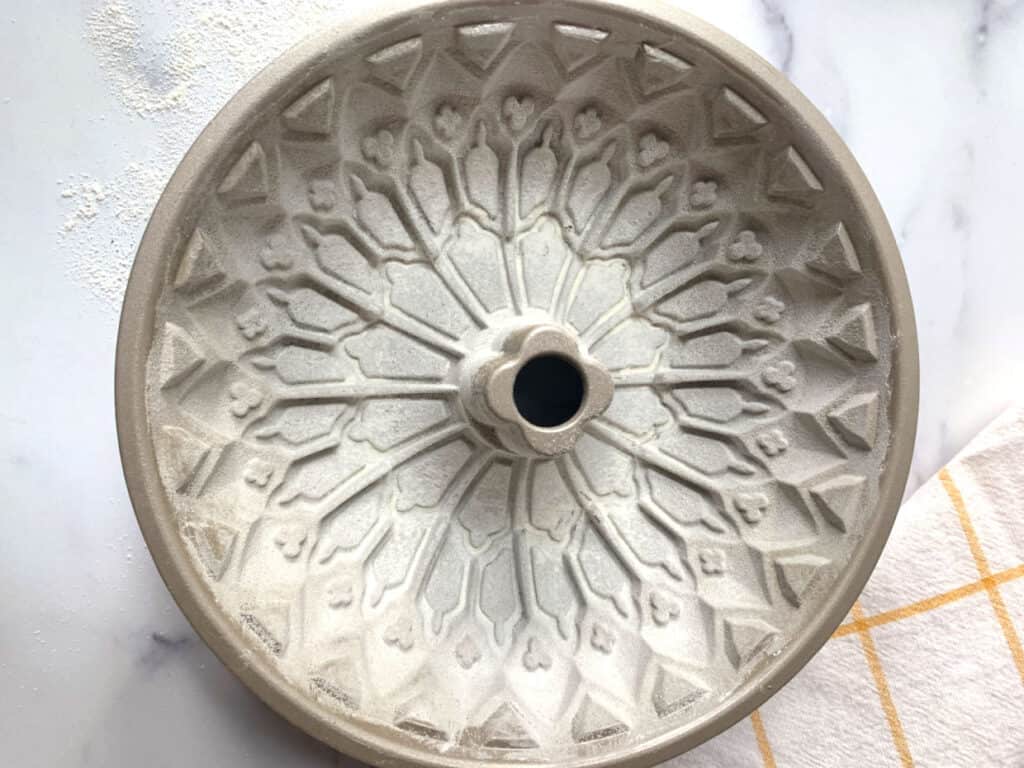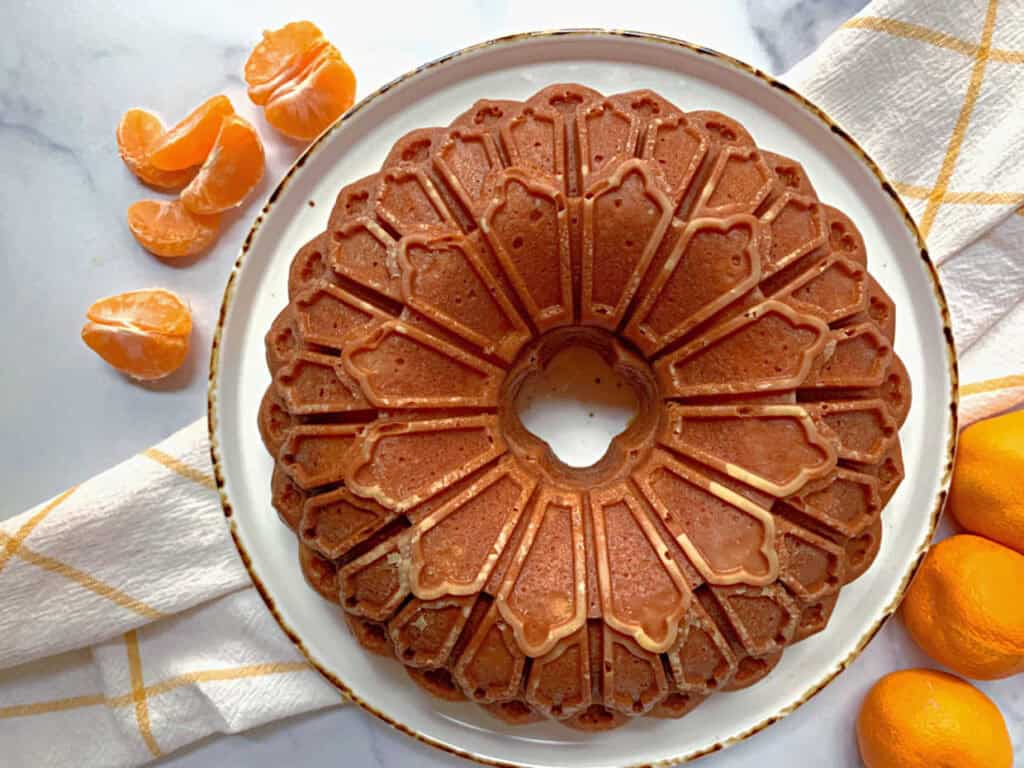Bundt pan baking is the key to effortless, show-stopping cakes. Whether you’re a seasoned baker or just getting started, mastering the Bundt is the key to moist, flavorful cakes with beautiful signature shapes. You can whip up impressive cakes with minimal effort with a trusty Bundt pan.

The signature Bundt shape is what makes these cakes so irresistible. The round design bakes everything evenly, keeping the cake moist and giving it a perfect, even browning. The bold ridges and curves create a beautiful presentation without fancy frosting. With a Bundt pan, you can make impressive cakes for holidays, special occasions or just because.
The timeless appeal of Bundt cakes
The Bundt pan history began in the 1950s when Nordic Ware introduced it at the request of a local Jewish women’s group in Minnesota. They adopted the German word “bund,” meaning an alliance or gathering, to name their modern, lightweight version of the traditional ceramic pans used for European cakes like Gugelhupf. The pan’s classic ring shape with distinctive ridges quickly became a hit with the cake’s pretty appearance.
Bundt cakes are popular for their striking appearance and even baking, thanks to the pan’s design, which promotes consistent heat distribution and locks in moisture. The pan’s versatility lets bakers experiment with various flavors and styles, making it a kitchen staple.
Types of Bundt pans
Choosing the right Bundt pan can make all the difference in your baking. Let’s explore the various types and materials to find the perfect fluted pan for your kitchen. The different materials will conduct heat differently and bake your cakes differently.
- Aluminum: Excellent heat conductors, often nonstick, ensuring even baking and easy cake release. Relatively lightweight.
- Cast iron: Durable, retains heat well for even baking. It needs seasoning and is great for a well-browned crust.
- Silicone: Too flexible and unstable for heavy Bundt batters, silicone pans have poor heat conductivity.
- Ceramic or stoneware: Retain heat well for even baking and consistent results, but it can be heavy.
Bundt pan sizes
There is now an amazing variety of Bundt pans, but here are a few standards.
10-inch Bundt pans:
- Standard size.
- Holds 10 to 12 cups of batter.
- Yields cakes that serve 12 to 16 people.
Mini Bundt pans:
- Ideal for individual servings.
- Typically holds about 1 cup of batter each.
- Perfect for small, personal-sized treats.
Steps to prep a Bundt pan
This is a two-step process; when done correctly, your cake will easily pop out of the pan.
Greasing: Thoroughly grease the pan, reaching every nook and cranny with unmelted butter, shortening or baking spray. Use a pastry brush for best results. Even nonstick pans benefit from light greasing.
Flouring: After greasing, flour the pan to prevent sticking. For chocolate cakes, use cocoa powder to avoid white residue. Evenly sprinkle and tap out any excess before adding your batter.

Successfully unmold a Bundt cake
Using a quality pan and correctly prepping it are key steps to ensuring your Bundt cake releases smoothly and retains its beautiful shape.
Cooling time:
Allow the cake to cool in the pan on a wire rack for 10 to 20 minutes. This brief cooling period lets the cake firm up slightly, making it easier to release from the pan while still warm but not fully cooled. Impatience with the cooling time can lead to a broken cake.
Loosening the edges:
Gently run a butter knife or spatula around the edges of the pan to loosen the cake. If the cake is stubborn, use the tap-and-shake method — tap the sides of the pan and give it a gentle shake to help release it.
Inverting the cake:
Place a wire rack over the pan, then carefully invert the entire setup. If the cake sticks, try gently tapping the pan or allowing it to cool a bit longer before attempting again. If needed, you can try loosening the edges once more.

The best types of cakes for Bundt pans
Bundt pans are versatile, but certain cakes truly shine when baked in them, thanks to their dense texture and the way they complement the pan’s design. Dense cakes like pound cake, butter cake and coffee cake work perfectly, holding their shape well and showcasing the pan’s design. Cakes with glazes are also ideal, as they highlight the intricate details of the Bundt pan.
“I love using my trusty old stoneware Bundt pan. It bakes my cakes perfectly every single time. Before I pour in the batter, I always sprinkle a little flour on top of the cooking spray. That little trick helps my Bundt cakes come out of the pan clean and perfectly shaped. And you can’t beat a classic chocolate Bundt cake — that’s hands down my favorite kind to make in this awesome pan.”
— Heide Bruaw, Real Life of Lulu
Bundt pan tips and tricks
Mastering the use of a Bundt pan can enhance your baking results, ensuring your cakes come out perfectly every time.
- Fill the Bundt pan two-thirds with batter. Overfilling the pan could result in overflowing or uneven baking.
- Using a plastic butter knife around the edges of the pan will not scrape the finish.
- Tap the filled pan gently on the counter to remove air bubbles before baking.
- Rotate the pan halfway through baking for even browning, especially if your oven has hot spots.
- Let the cake cool completely before glazing or frosting to prevent it from melting or sliding off.
- Even nonstick pans need attention for greasing and flouring.
With this guide to Bundt pan baking, you’re all set to have fun with your cake baking. There’s nothing like the thrill of flipping out a perfectly baked Bundt cake with its impressive shape and smooth texture. So get creative with different recipes and shapes, and make Bundt cakes a regular treat. With a bit of practice, you’ll be wowing everyone with gorgeous, delicious cakes that are as tasty as they are eye-catching.
Jere Cassidy is the writer and recipe developer behind the blog One Hot Oven. A passion for all things food-related led her to culinary school to expand her baking skills and now to share easy recipes for all home cooks and bakers of all skill levels. When not in the kitchen, Jere’ likes to travel far and wide to find delicious food.